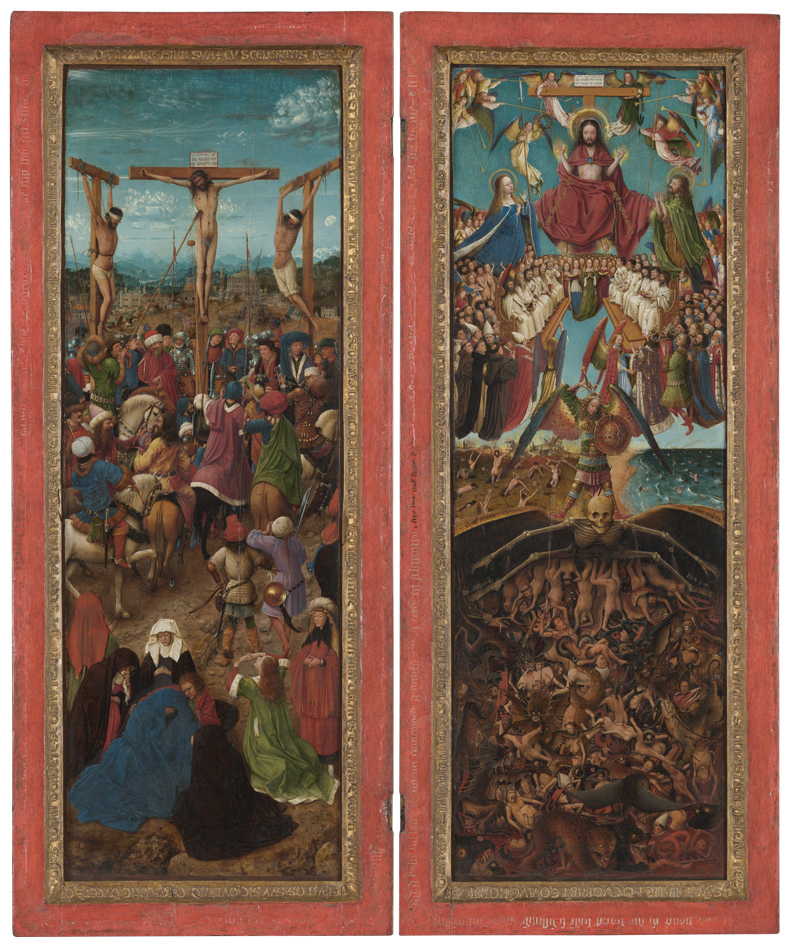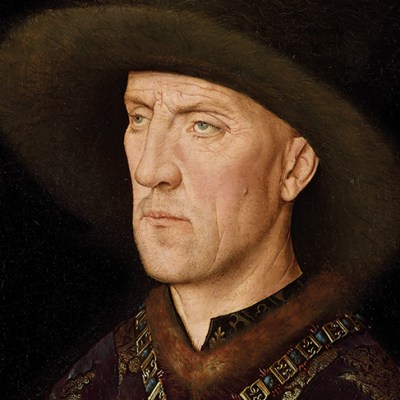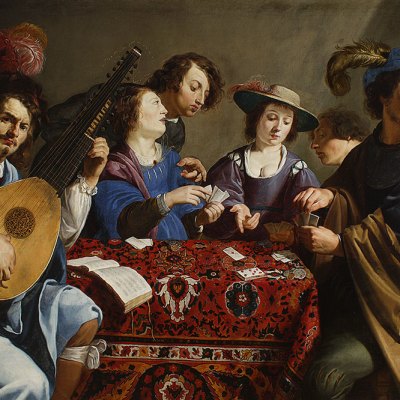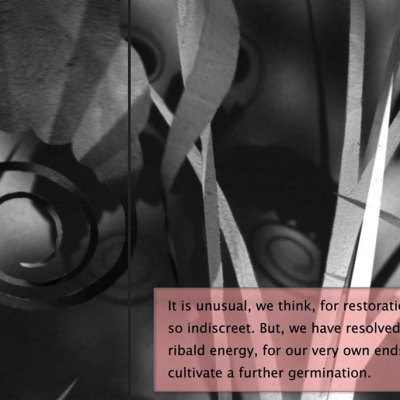From the October 2023 issue of Apollo. Preview and subscribe here.
 The opening sentence of the foreword to the first of the two books under review explains that ‘the conservation project of the Van Eyck brothers’ Adoration of the Mystic Lamb – the Ghent Altarpiece – started in 2012.’ A preliminary study in 2010 preceded the actual three-stage restoration – exterior (2012–16); interior, lower register (2016–19); interior, upper register (2023–) – which is still very much a work in progress. A companion volume on the exterior was published in 2020, and the completion of the task will be followed in due course by a final one on the upper register. It has been known for some time that considerable areas of the Ghent Altarpiece were radically repainted in the 16th century and the removal of this overpaint has proved revelatory. The before and after photographs reproduced in the present volume eloquently convey the extent to which the images in all pre-restoration publications have been lightened and brightened.
The opening sentence of the foreword to the first of the two books under review explains that ‘the conservation project of the Van Eyck brothers’ Adoration of the Mystic Lamb – the Ghent Altarpiece – started in 2012.’ A preliminary study in 2010 preceded the actual three-stage restoration – exterior (2012–16); interior, lower register (2016–19); interior, upper register (2023–) – which is still very much a work in progress. A companion volume on the exterior was published in 2020, and the completion of the task will be followed in due course by a final one on the upper register. It has been known for some time that considerable areas of the Ghent Altarpiece were radically repainted in the 16th century and the removal of this overpaint has proved revelatory. The before and after photographs reproduced in the present volume eloquently convey the extent to which the images in all pre-restoration publications have been lightened and brightened.
Crucially, by referring to brothers in the plural at the outset, this compelling study nails its colours to the mast in terms of its conviction, amply justified by what follows, that Jan van Eyck did not, as has sometimes been supposed, paint the altarpiece on his own. On the contrary, as a Latin quatrain on the frame suggests, he was preceded – or joined – by his brother Hubert, who died in 1426, six years before this massive project was finished. The text almost unfailingly sticks tightly to the task in hand, but Griet Steyaert and Marie Postec do allow themselves a tiny digression and cautiously speculate – on the basis of the underdrawing – that a grisaille diptych in the Louvre representing Saint John the Baptist and the Virgin and Child may be an earlier production by the elusive Hubert.
The major argument, which is meticulously expounded and relies on a combination of technical and stylistic analyses, is that when it comes to the lower register of the interior there is clear evidence of three phases of execution. In spite of all the appropriate scholarly caution of the authors, these are in effect defined as representing the work of Hubert, the work of Jan (including some over-painting of parts already painted by Hubert), and subsequent reworkings that postdate the Van Eycks but precede the aforementioned 16th-century repaintings.
 Intriguingly, the title page includes the line ‘Making extensive use of the Closer to Van Eyck Website’, owning up to the fact that consulting it is blatantly the best way to study the work. More generally, the truth is that these days people often read books of this kind in front of their computers. When it comes to works that are discussed but not reproduced, we still dutifully persist in giving references to illustrations in other books, but actually rely on Google, except when it fails to yield a decent image of the work in question.
Intriguingly, the title page includes the line ‘Making extensive use of the Closer to Van Eyck Website’, owning up to the fact that consulting it is blatantly the best way to study the work. More generally, the truth is that these days people often read books of this kind in front of their computers. When it comes to works that are discussed but not reproduced, we still dutifully persist in giving references to illustrations in other books, but actually rely on Google, except when it fails to yield a decent image of the work in question.
Turning to the second book under review, it has long been recognised that the Crucifixion and Last Judgment in the Metropolitan Museum of Art in New York, here unequivocally given to Jan van Eyck, must originally have formed the wings of a triptych, but there has been altogether less agreement over such matters as what went between them, who commissioned the work and where it was located. As with the Ghent Altarpiece, so here too a restoration campaign was involved, albeit only of their double frames. In addition to the previously visible Latin inscriptions in pastiglia on the inner frames, this revealed the outer frames to have been adorned with Middle Dutch texts in white on a red ground and led to all sorts of fascinating conclusions.
The Crucifixion; The Last Judgment (c. 1436–38), Jan van Eyck. Metropolitan Museum of Art, New York

The title of this volume already makes it clear that it believes it has sorted all this out, and the different elements of the argument are ingeniously and convincingly combined to support one another. The first step is to contend that the missing central field must have contained a very particular host tabernacle. In 1433, Pope Eugenius IV gave Philip the Good, Duke of Burgundy, a relic of the so-called Miraculous Bleeding Host, which found a home in Dijon; Dijon has therefore been proposed as the original home of the two paintings. However, a cult following for another relic of the Miraculous Bleeding Host developed in Brussels as a result of the granting of an indulgence in 1435 by Cardinal Niccolò Albergati, the General of the Carthusian Order, and multiple indulgences granted to it by Pope Eugenius IV in 1436. This relic was installed in a chapel established around 1436–38 in the cathedral of Saint Michael and Saint Gudula in Brussels. Better yet, the rediscovered fragmentary texts on the frames are in Brabantine dialect, which is what was spoken in Brussels.
For Ainsworth, everything thus points to Philip as the patron, but she rightly observes that there is no proof of this, and underlines that the pictures are neither signed nor dated. Still, she concludes that they are by Jan and datable to 1436–38, some years after the Ghent Altarpiece. She also proceeds to give to Jan a much debated drawing of the Crucifixion in Rotterdam, whose composition is closely connected with, but far from identical to, that of its New York counterpart, contending that the Rotterdam drawing follows on from it.
When a couple of books on closely linked themes are published in quick succession, it is tempting to wonder if their respective authors would have wished to change anything if they had fully digested each others’ words. Here the big questions are about attribution: Ainsworth ignores the Ghent Altarpiece team’s Hubert idea and captions the Louvre diptych ‘Follower of Jan van Eyck c. 1440’; it remains to be seen what they will now make of her arguments concerning the Met diptych, which they captioned ‘Attributed to Jan van Eyck (and workshop assistant)’. Perhaps a later volume in their ongoing investigation will reveal all.
The Ghent Altarpiece. Research and Conservation of the Interior: the Lower Register by Griet Steyaert, Marie Postec, Jana Sanyova, Hélène Dubois et al. and Jan van Eyck’s Crucifixion and Last Judgment: Solving a Conundrum edited by Maryan W. Ainsworth are published by Brepols.
From the October 2023 issue of Apollo. Preview and subscribe here.



